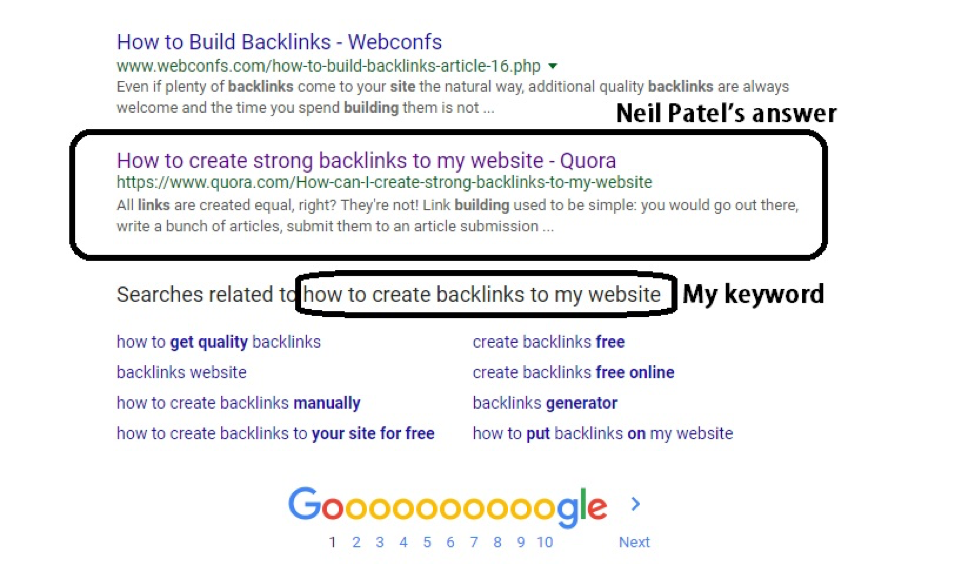Attracting the right kind of visitors is the most challenging task for many content marketers. A content marketer is, as they say, a Jack of all trades. For one thing, he should be keen enough in getting to know their target audience, researching a specific topic, and writing a lively copy. For another, he should have the audacity of a sales person to be able to attract visitors to his content.
In content marketing, the first is called content curation and the second content amplification.
In this article, you’re going to read about 4 free tactics for content amplification:
Optimize your posts for the right keywords
Nothing’s better than the good old organic traffic to your posts. You might have some level of success with social media but that’s going to fade away. If you’re struggling to increase your social media traffic, Mention’s amazing guide on improving organic social media reach is a must-read.
Implementing the SEO basics, on the other hand, will guarantee long-term success. Among the on-page SEO principles, researching and targeting some keywords in your article can ensure that your content will be found on Google long after it was originally published.
If you’re trying to optimize your current articles, you can take a look at Google’s suggestions or related searches, use a great keyword searching tool such as WooRank’s keyword tool, or search social networking websites. Alternatively, a smart way to optimize your current posts is taking advantage of Google search console to find out what keywords bring most visitors to your blog most.
You can then optimize your posts to target the exact keywords that you rank for.
Here’s what you should do:
- Set up your Google Search Console and give it a week or two to gather some data.
- Open it and navigate to the left hand side menu and select “search traffic” then “search analytics”
- In the search analytics page, tick all the options in the filter box to have a complete view on clicks, impressions, CTR, and positions.

- Set up your Google Search Console and give it a week or two to gather some data.

- Open it and navigate to the left hand side menu and select “search traffic” then “search analytics”

- In the search analytics page, tick all the options in the filter box to have a complete view on clicks, impressions, CTR, and positions.
- From the filter box select “Pages” and click “Reset (top pages)”. You will see a list of your pages with their analytics.
- Select a page. Then click on “Queries” from the filter box to see the keywords your page ranks for, as well as the number of clicks, impressions, CTR, and the average position for each keyword.
- Choose the keywords that have a better performance (based on their impressions or CTR maybe) and optimize your selected page for those keywords. For example, the highest number of impressions for my guide on digital marketing belongs to the keyword “SERP rank checker”. I might want to expand the topic in my guide and make it more keyword optimized.
Build Links Using Outreaching Methods
Doing outreaching for link building might have a low success rate, but it’s still a viable method if you’re starting out and don’t want to hire an SEO agency to do the leg-work for you (but seriously if you’re looking for an SEO agency, here’s a list of top SEO companies).
Obviously, you can do different kinds of outreaching campaigns:
- You can offer a free guest post on a blog (and include your links in it)
- you can make an infographic and offer it to some blogs that typically publish them and that will include a link to your website.
- You can offer testimonials, or examples to a writer’s argument, and ask to be featured in a post with a link back to your website.
- You can find a broken link in their blog and offer your similar piece of content to be replaced with the broken one.
- You have something to offer them in exchange for including your link. Maybe mention them in one of your future guest posts for an authority blog.
In order to identify the broken links of a website, you follow these steps:
- Open Brokenlinkchecker and enter a domain name to be analyzed. It will show you the pages that contain links with 404 error.
- Click on the URL button beside each page to be directed to it.
- Install the Broken Link Checker extension for Chrome.
- Run the extension and find the broken links.

Don’t Forget other Search Engines
If you have submitted your blog to other search engines such as Bing, Baidu, and Yahoo, your efforts to improve your ranking on Google will inevitably improve your ranking on them too.
In Bing, as the second most used search engine, you have access to a set of webmaster tools (just like Google) and have full control on your blog’s functioning.
Among the many features of Bing Webmaster Tools, there is the ability of adding and verifying many websites, submitting sitemaps and URLs, controlling crawling settings, having access to the SEO reports of various pages, SEO analyzer, keyword research tool, security reports, etc. You will also receive 100$ worth of advertising on Bing for free.
It’s also interesting to know that since 2010, Yahoo search engine is being powered by Bing, meaning that the results on both these search engines are nearly identical — so an improvement in Bing means an improvement in Yahoo.
Be active on Quora, news aggregators, and niche communities
Communities are still a great way to increase exposure. Holding and managing events the right way is a the key to more involvement and loyalty to your business. Even in the online world, well-managed communities are a go-to place for many people.
It’s crazy how some great marketers still get involved in conversations on Quora. Neil Patel for instance always answers the questions the most comprehensive way possible and his answers get quite a lot of upvotes.
This is a great one:

This answer is one of his blog posts and it’s been viewed more than 54 thousand times.
Like any other self publishing platforms such as Medium or LinkedIn, Quora has lots of backlinks from high authority blogs, lots of traffic, and lots of social shares. The inevitable consequence is “Quora ranks well in organic results especially for the question keywords”.
If you do a quick search for the keywords like “how to create backlinks to my website” “get strong backlinks” or even “create backlinks”, you’ll see Neil Patel’s answer on Quora in the first or the second page of SERPs.

This means lots of exposure for Neil Patel and lots of clicks to the links he has provided in his Quora answer.
News aggregators like Flipboad, News360, discovery engines like Stumbleupon, feed readers like Feedly or Bloglovin, and niche communities like growthhackers.com (for digital marketers) are also great places to submit your posts to.
It takes much time and effort to reap the benefits of such platforms but they could send a good amount of traffic to your blog in the long run if you pay attention to them consistently.
In Flipboard, you can make your own magazines (just like boards on Pinterest), and then start saving articles in them. You should then try and get likes and followers for your profile to gain exposure.
News360 has a publishers program where you can submit your blog’s URL and sitemap for consideration. Once confirmed, you can log into your account and see your analytics.
Feedly has publishers program too. You can get in touch with them through email, get your follow button to be placed on your site, or fill in a form to be featured for some keywords.
Bloglovin is a popular feed reader that could expose your content to lots of monthly readers. You can easily sign-up, and claim your blog by copying a snippet in a new post on your blog.
Finally:
Whether you aim to grow your fledgeling business or you’re a freelance consultant looking for well-to-do clients, content marketing is a must-have marketing strategy for you. But if you’ve been doing it for a while, you know that among its different phases, content amplification is one of the hardest. Organic social media reach, which was a free and easy way to drive traffic to a blog, has dwindled a lot in the past years and marketers need to act smarter in order to drive free traffic to their content. Hopefully, this guide will help you get better at content amplification and increase your sales.
